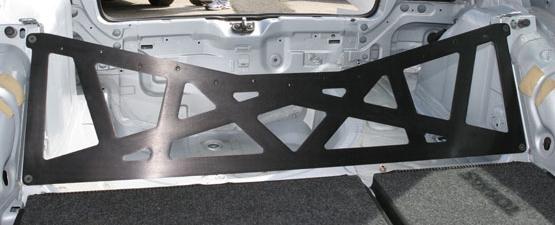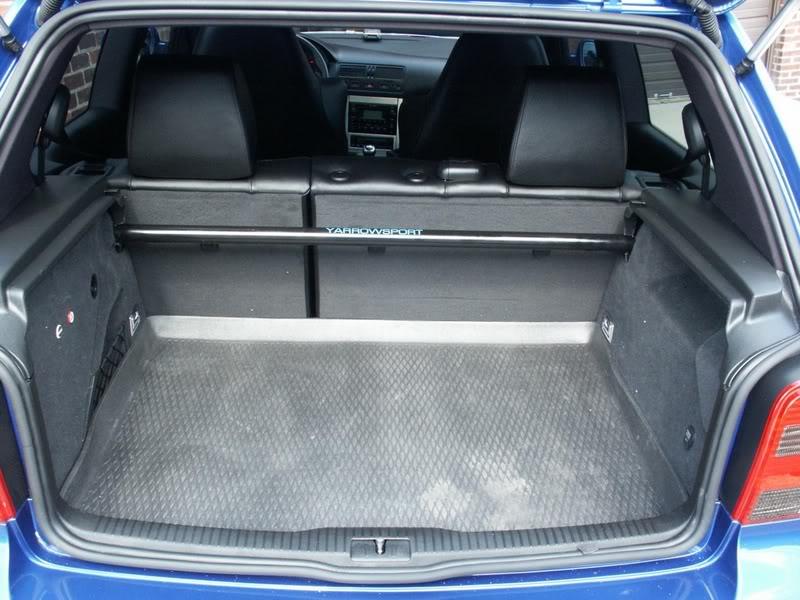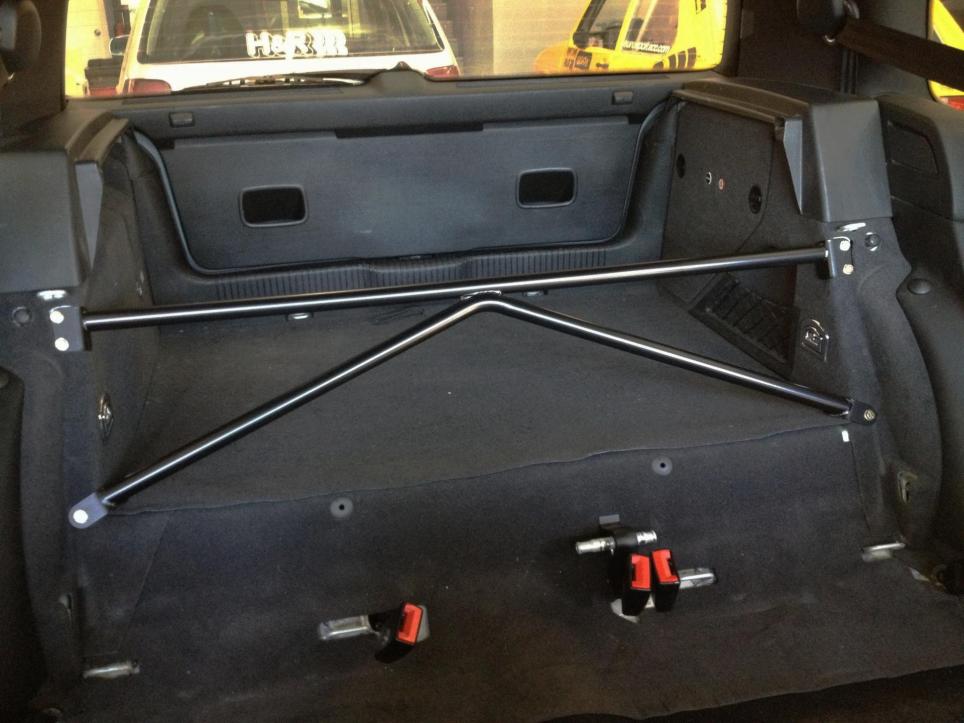A050 is a hot range of 29-32psi I think. I think 30-31psi is usual. Gary would be able to confirm though. Not sure re the Toyos though I have heard they prefer a tad more air than the A050's eg 32psi. The Nt01's I dont think are an R spec, more like a UHP street 'semi' so would need to be higher I'd think ie due to less sidewall/carcass structure. My AD08R's were best around 34 and that seems to go for RSRR's, R1R's and the like. I don't think the NT01's will hold a candle to the R specs but are street legal so could be used there. No doubt they'll go harder than the RE003's though.
Above Forum Ad
Collapse
Announcement
Collapse
No announcement yet.
simon's learning what to do with the polo thread
Collapse
X
-
For A050's we aim for 30 psi, 31 is OK, 32 at a stretch but much over that risks blistering. Avoid starting pressure lower than 24 psi as the tires will spin on the rims under braking (ruins the balance real bad). We run markers on the tyres and rims to detect any movement, a quarter of a turn is not unusual on the front.
Cheers
GaryGolf Mk7.5 R, Volvo S60 Polestar, Skyline R32GTST
Comment
-
gotcha - stick with what I've been doing then the first sprint is on 17th Feb, getting a bit itchy to go fast again...
the first sprint is on 17th Feb, getting a bit itchy to go fast again...
I'd like another set of wheels so I can mount the NT01s - I was offered a set of 15" Audi wheels last year, but they're only 6" wide... really too narrow (aren't they?)
The NT01s are very similar to the R888Rs, google says they're a semi slick... Though the guy who gave them to me went from them to 2nd hand slicks and picked up 3 seconds with his Nissan powered clubman
Comment
-
yeah 6in is a bit narrow for 205's. 6.5in far better. 7in best. Actually yeah you're right they are classed as a semi. I think I read in the past that NT01's had been the same compound as R888 just with a different tread cut. apparently co owned and out of same factory - but that was the interwebs telling me that. Now that we have R888R I'm not sure where NT01 fits relative to the Toyo. Be interesting what their relative weights are. I had a Toyo rep tell me that an R888 soft compound (back when they existed) was still harder than an A050 medium. R888R pretty much only come in medium now. They may be a softer compound now, who knows, but I think the A050's will be the stickier tyre.
Comment
-
thanks - I'll give him a shout. It'll give me a way to use the NT01s, even if it works out that I run 7" wheels at the front and 6" at the back (or some combination)
I assume running wide tyres on a narrow rim makes the sidewalls flex and roll-over more than desired - more air pressure if that happens?
Comment
-
updating Gary's list - I'm doing OK !
Not sure if I've asked what to do with front roll centre correction, or what's wrong with the stock roll-centre. I'll do some readingOriginally posted by Sydneykid View Post#1 Rear swaybar (or beam stiffener) nothing else comes close, bang for buck CHECK
#2 Front positive caster, the more the better CHECK
#3 Front negative camber for obvious reasons CHECK
#4 Rear toe out, ask Sam CHECK (have room for a bit more)
#5 Lower the rear roll centre CHECK
#6 Dampers, buy the best you can afford CHECK
#7 Front roll centre correction and bump steer elimination
#8 LSD
#9 Rear springs, at least triple the standard rate CHECK
#10 Front springs, ~1.5 times the standard rate CHECK
#11 Front swaybar
I'd like to understand body bracing more, and whether it's really worthwhile. Opinions on front strut braces seem to polarise between "utterly awesome and essential" to "dodgy snake oil that doesn't do anything". I look at lots of different setups on cars and the ones that actually seem to have some purpose is where the bar ties the towers together AND back to the firewall. AE92 Corolla SX (4AGE engine) have this setup standard. Toyota tend not to do things to add bling, they'd do it because it works, right?
then there's the rear, do things like this make any difference?

these seem a bit pointless

Comment
-
Being a rear beam the rear strut brace only stiffens the damper tower. I do think they stiffen the body which is a bit prone to twisting. Pretty sure I've banged on about it before but my rear hatch wouldn't close properly when parked on a slope - the striker wouldn't line up so the body had to be twisting. On my drive way the inside rear will be 2 inches in the air and if you rock the chassis you can hear it creaking and watch the door gaps change. This would definitely be happening during cornering so I reckon particularly the first brace would be great.
Comment
-
true... I was going to do that driveway twist check but forgot all about itOriginally posted by sambb View PostOn my drive way the inside rear will be 2 inches in the air and if you rock the chassis you can hear it creaking and watch the door gaps change. This would definitely be happening during cornering so I reckon particularly the first brace would be great.
I might draw one and see what my waterjet man will charge for it. The row of screws along the top edge of that one go into what looks like a piece of RHS, I don't really see why that's necessary unless the whole "web" idea is just wank. A cross bar like this could work just as well (if it works at all)

it's pretty hard to find actual empirical tests that prove that the strut towers flex, and installing a bar reduces it...
Comment
-
yeah I don't think its the strut towers flexing independently due to suspension loads (the traditional mc strut problem) because they don't take loads in that way. The only things up there are the dampers. But the floor would definitely have pretty massive load torqueing at it as the twist beam twists for sure. I think its those twisting loads that move the whole body. But the towers are a convenient way I guess mounting something to combat that and triangulating the forces from them to the floor might be a good way to stiffen things up. While you're at it you may as well make the main bar out of the right tubing diameters so that you can hang a harness off them in the future.
Comment
-
the caveat though that my car is sprung stiffly so will show up any softness in the chassis in warp, whereas your car is a little softer so there's a bit more give in the suspension which maybe wont translate into as much chassis warp in your car? I'd guess that I'd notice those braces in my car moreso than in a soft car if you get my drift.
Comment
-
no problem opening/closing my rear hatch when crossed up in the driveway with 3-4" of air under the back wheel, even with the back seats pushed forwards - no creaks or groans when rocking the car with the hatch open and my hands on the taillights...
I can't do the sprint that's on in a couple of weeks - scheduling conflict. The next event is at Winton in mid-March... maybe I'll try to do a turbo dump/exhaust before then
Comment
-
Several things are going on there. Firstly an R tyre is not as susceptible to flex as a road tyre. Then the amount of flex in the tyre has an effect on its temperature and therefore how much pressure it gains between cold and hot. So a more flexy tyre and rim combo may well need less starting (cold) pressure to achieve the same running (hot) pressure. What pressure the tyre runs at is far more important than what it starts off at and the only way to ensure that is to check it. If the pressure is too high A050's will blister and it doesn't seem to matter what rim size they are on. We run 215/50/15's on 7" rims at 30 psi (hot) the same as 225/45/16's on 8" rims, 245/40/17's on 8" rims and 265/30/18's on 9" rims. The target is always 30 psi, but they start off at various (cold pressure) depending on the conditions on the day.Originally posted by simon k View Postthanks - I'll give him a shout. It'll give me a way to use the NT01s, even if it works out that I run 7" wheels at the front and 6" at the back (or some combination)
I assume running wide tyres on a narrow rim makes the sidewalls flex and roll-over more than desired - more air pressure if that happens?
Hope that made sense.
Cheers
GaryGolf Mk7.5 R, Volvo S60 Polestar, Skyline R32GTST
Comment
-
I've corner weighted a lot of cars in my time and a sure sign of chassis flex is constantly chasing the balance. Move one corner 10 mm and that moves 20 kgs, move it another 10 mm and it moves 30 kgs, huh? Take the last 10 mm back out and it only moves 15 kgs, WTF?
There are a couple things to keep in mind. Controlling the suspension geometry is far more important than overall chassis rigidity. Limiting unwanted camber change for example. But trying to selectively add chassis braces can be hit and miss and in general there are better more effective ways to spend the limited Budget.
Based on my experiences a strut tower to strut tower brace on the front is very worthwhile on a macstrut car. Basically it doubles the resistance to camber change and a small amount of movement at the top of a strut can mean a lot of camber change at the wheel. Is 100% increase enough? It varies from chassis to chassis and then by the age of the chassis and how many K's and accident repairs. The triangulation back to the firewall often actually doesn't add that much, plus it depends on how strong the firewall is in that location. On a car designed for a triangulated strut brace then it's likely to do more. But generally if they are designed for a triangulated strut brace then they already have one.
I could spend a couple of hours on this subject, so I'll keep it short. The firewall on a production car is a hinge point, where the chassis in front of it can flex vertically/separately from the cabin area. This is why we have roll cage members that extend from the A pillar bars to the strut towers, generally 2 each side, triangulated vertically. This lessens the hinge effect at the firewall. A triangulated strut brace may well help in that regard, but it puts a large impact load on the centre of the firewall. Which if not designed for it will flex, fatigue and eventually crack.
In summary a strut tower to strut tower brace on a macstrut car is a no brainer. But spending the extra on a triangulated one may not be good value for money.
I really wouldn't bother on the rear of a twist beam/trailing arm car like a Polo, they have no effect on the geometry. So really all they can possibly do is add minutely to the coverall chassis rigidity.
Cheers
GaryLast edited by Sydneykid; 20-02-2019, 03:56 PM.Golf Mk7.5 R, Volvo S60 Polestar, Skyline R32GTST
Comment
2025 - Below Forum
Collapse

Comment